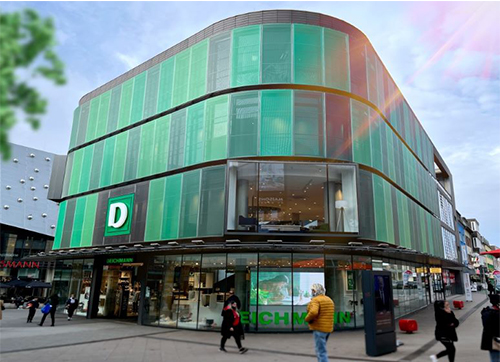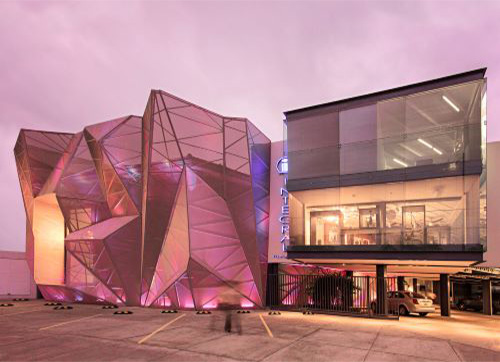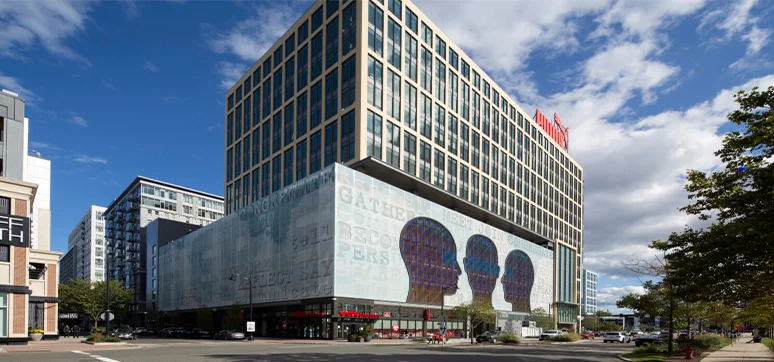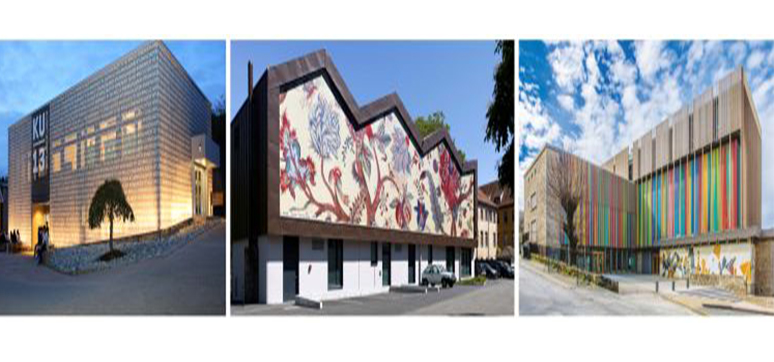In today’s times, with the energy crisis, rising costs, and the impact of global warming having a major impact on everyone’s lives, things that were once taken for granted are now being redefined. So too in the construction world, where new initiatives and materials are gaining ground…and rightly so!
The use of fabric façades, little known until recently, is becoming an increasingly popular option for new construction and renovation projects because of the energy and cost savings they offer.
Fabric façades can provide significant energy savings, making them an attractive option for building owners looking to reduce their energy costs. They also offer a variety of creative options, making them an attractive option for many building projects.
Energy Savings
 Textile façades help reduce energy costs by providing insulation from the elements. The fabric of the façade acts as a kind of “blanket” for the building, trapping heat in the winter, keeping warm summer air out, and generally reducing the amount of energy needed to heat and cool the building. This can significantly reduce energy costs for building owners. In addition, and depending on the type of fabric, it can also act as a sort of “air filter” for the building, keeping dirt, dust, and other potentially harmful particles out of the air. This helps reduce the amount of air pollution in the building, making it a healthier environment for occupants.
Textile façades help reduce energy costs by providing insulation from the elements. The fabric of the façade acts as a kind of “blanket” for the building, trapping heat in the winter, keeping warm summer air out, and generally reducing the amount of energy needed to heat and cool the building. This can significantly reduce energy costs for building owners. In addition, and depending on the type of fabric, it can also act as a sort of “air filter” for the building, keeping dirt, dust, and other potentially harmful particles out of the air. This helps reduce the amount of air pollution in the building, making it a healthier environment for occupants.
A wide variety of creative options can also be achieved with fabric as a façade cladding material. The fabric can be printed in any design the building owner desires, adding an attractive aesthetic to the building’s exterior.
Unique three-dimensional forms can also be easily created using textiles, giving old or new building projects a beautiful one-of-a-kind look.
Save on Construction Costs
 Since fabrics are lightweight and easy to install, the installation process can be completed quickly and inexpensively. This can lead to significant savings over traditional masonry, steel, or wood-based façades.
Since fabrics are lightweight and easy to install, the installation process can be completed quickly and inexpensively. This can lead to significant savings over traditional masonry, steel, or wood-based façades.
In addition, the fabric is highly durable and resistant to harsh weather conditions, meaning it will maintain its attractive appearance for years to come. Because long spans can be covered, substantial savings can be made on the understructure. This easily results in a cost saving of 50% compared to other types of cladding.
Conclusion
Thanks to a very low ecological footprint, fabric façades are an ideal application to make the building and renovation industry more sustainable. The creative potential – also thanks to the possibility of durable printing – is endless, while the costs are relatively low. A building fitted with façade mesh is characterized by optimum thermal and visual comfort.















